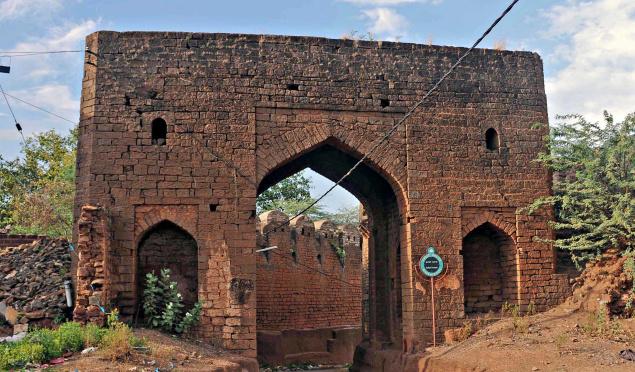
This is the curious case of how the pronunciation of a word can lead to the creation of parallel historical narratives. Stories spun around an ancient door in Bidar are testimony to this.
The eastern gate of the Bidar fort that leads to Ashtoor village — the royal necropolis of the Behmani kings — has long been called ‘Dulhan Darwaja’ (Bride’s Gate). Dark and gory stories have been passed down through the ages of a cruel king called Sabbal Barid, who claimed every bride in the city for himself on her wedding day. The brides chosen by the king came in through this door. Scholars, however, have demystified the legend arguing that the name of the gate is ‘Dalhan Darwaja’ (Bullock Cart Gate). They say it got its name simply because it was only large enough to allow a bullock cart to pass through, and not a chariot or elephants.
“The confusion must have started with the translation of the book Tareek-e-Firishtah (History by Firishtah) by the court historian of Bijapur, Adilshahi Kingdom, written in the 16th Century,” said Abdul Samad Bharati, a Persian scholar.
“Some portions of his book were translated into Urdu by Sheikh Mohammad, and in English by John Briggs. The Persian book seems to have used the letters ‘u’ and ‘a’ interchangeably. But the British author used ‘u’ instead of ‘a’,” he said. The trend seems to have continued in Urdu too, says Mohammad Shafi, a poet. Though the stories about Sabbal are widely circulated, there is no proof that there was indeed a king by that name, adds Mr. Bharati. Ghulam Yazdani, in his seminar work ‘Bidar: Its history and monuments’ refers to this gate in detail and states it has nothing to do with any bride.
While the eastern gate of Bidar fort has long been called ‘Dulhan Darwaja’ (Bride’s Gate), scholars say it is ‘Dalhan Darwaja’ (Bullock Cart Gate)
source: http://www.thehindu.com / The Hindu / Home> News> National> Karnataka / by Rishikesh Bahadur Desai / Bidar – June 18th, 2015








